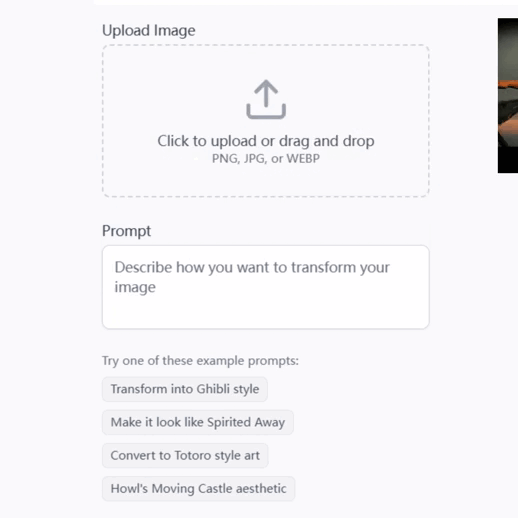
Ink Painting - 水墨画 - Exploration, No Signup

Welcome! Let's explore the world of ink painting together.
Empowering Artistic Expression with AI
Let us start creating Watercolor Ink Painting with the following color and character...
Please translate the image description into Chinese, Japanese, and Korean...
Can you provide a critique of the following ink painting...
Write a summary based on the previous description and critique...
Get Embed Code
Overview of Ink Painting - 水墨画
Ink Painting, or 水墨画 (shuǐmò huà), refers to a specialized GPT model designed to assist with and provide insights into the world of ink painting, a traditional East Asian art form that primarily uses black ink—the same used in East Asian calligraphy. This GPT model is crafted to serve as a bridge between the rich, historical tradition of ink painting and modern artistic exploration, enabling users to learn about techniques, history, and the cultural significance of ink paintings. It can generate descriptive and critical content, translate text related to ink paintings into multiple languages, and create digital art inspired by the user's input, simulating the aesthetic and techniques of traditional ink painting. Powered by ChatGPT-4o。

Core Functions of Ink Painting - 水墨画
Art Generation
Example
Generating digital ink paintings based on user inputs such as color and character (e.g., Red and Dragon).
Scenario
An artist seeking inspiration for a new project can input desired elements into the GPT model to create a unique ink painting, blending traditional and modern aesthetics.
Descriptive Analysis
Example
Providing detailed descriptions of uploaded ink paintings.
Scenario
A student studying ink painting uploads an image of a traditional piece and receives an in-depth analysis of its composition, techniques, and symbolism.
Art Critique
Example
Offering critical analysis on generated or uploaded ink paintings.
Scenario
An aspiring ink painter uploads their work to receive constructive feedback on the use of color, composition, and the interplay of traditional and modern elements.
Translation Services
Example
Translating descriptions and critiques of ink paintings into Chinese, Japanese, and Korean.
Scenario
A gallery owner wants to present an international exhibition on ink painting and requires detailed descriptions and critiques in multiple languages for visitors.
Target Users of Ink Painting - 水墨画
Art Students and Educators
Individuals studying or teaching art history, especially East Asian art, can leverage the GPT's capabilities to enhance their understanding and appreciation of ink painting, incorporating it into their studies or curricula.
Professional and Aspiring Artists
Artists interested in exploring or deepening their practice within the ink painting tradition can use the GPT to experiment with different subjects and techniques, or to gain insights into improving their art.
Art Collectors and Enthusiasts
Those with a passion for collecting or appreciating ink paintings can utilize the GPT to learn more about the history and cultural significance of their collections or to explore new artists and styles.
Gallery Owners and Curators
Professionals in the art exhibition space can employ the GPT to create multilingual descriptions and critiques for artworks, aiding in the organization of diverse and inclusive exhibits.

How to Use Ink Painting - 水墨画
1
Start with a free exploration by visiting a platform offering immediate access, no login or premium subscription required.
2
Gather your materials: high-quality ink, brushes of various sizes, rice paper, and a clean, flat surface for painting.
3
Familiarize yourself with basic strokes and techniques by practicing simple shapes and lines to understand the brush's movement and ink flow.
4
Experiment with different concentrations of ink and water to achieve various shades and textures, from deep blacks to soft grays.
5
Explore traditional subjects like landscapes, flora, and fauna, focusing on expressing the essence of the subject with minimal strokes.
Try other advanced and practical GPTs
Sing to me
Discover poetic connections with AI

3D Kirigami Arts Creator
Unleash creativity with AI-powered kirigami designs

Sing Any Foreign Song
Sing any song in Mandarin with AI

Broad OS Tech Guru
AI-powered tool for managing all OS

Brad Pitt
Harness AI with a touch of Hollywood charisma

Asterisk SIP Engineer FR
Empowering SIP telephony with AI

Over Exercise
Empowering Safer Workouts with AI

Voice Over Maker
Transform text into lifelike speech.

Voice Over From Text
Bringing Text to Life with AI

Voice Over
Bringing Text to Life with AI

Invest GPT
Empowering Your Investment Decisions with AI

Invest Buddy
AI-powered financial insights for everyone

FAQs on Ink Painting - 水墨画
What is Ink Painting - 水墨画?
Ink Painting, or 水墨画, is a traditional East Asian art form using black ink—the same used in calligraphy—to create dynamic landscapes, floral, and fauna. The art emphasizes simplicity, monochromatic beauty, and the spiritual harmony between nature and humanity.
What materials do I need to start?
The essential materials for ink painting include special brushes, ink sticks (or liquid ink), rice paper (also known as Xuan paper), and a grinding stone for mixing ink.
How do I control the ink's intensity on the paper?
Ink intensity can be controlled through the amount of water mixed with the ink. More water results in lighter shades, while less water produces darker, more intense tones.
Can beginners practice Ink Painting?
Yes, beginners are encouraged to practice ink painting. It starts with learning basic brushstrokes and understanding ink flow, gradually moving towards more complex compositions.
What are some common themes in Ink Painting?
Common themes include landscapes (山水, 'mountain-water'), flowers and birds (花鸟), and other natural elements. These subjects are not just depicted for their beauty but also for their symbolic meanings and the painter's expression of philosophical ideas.






